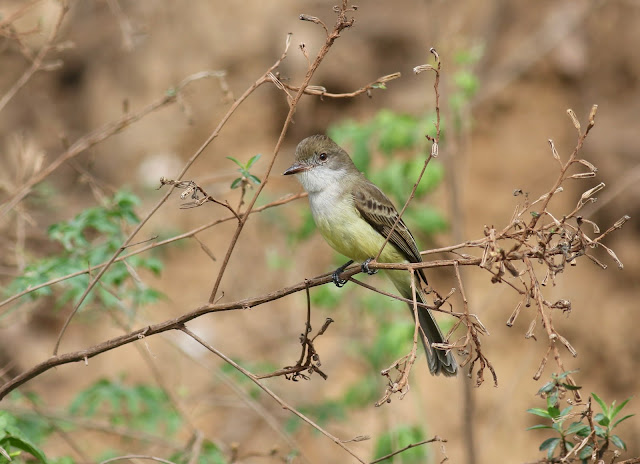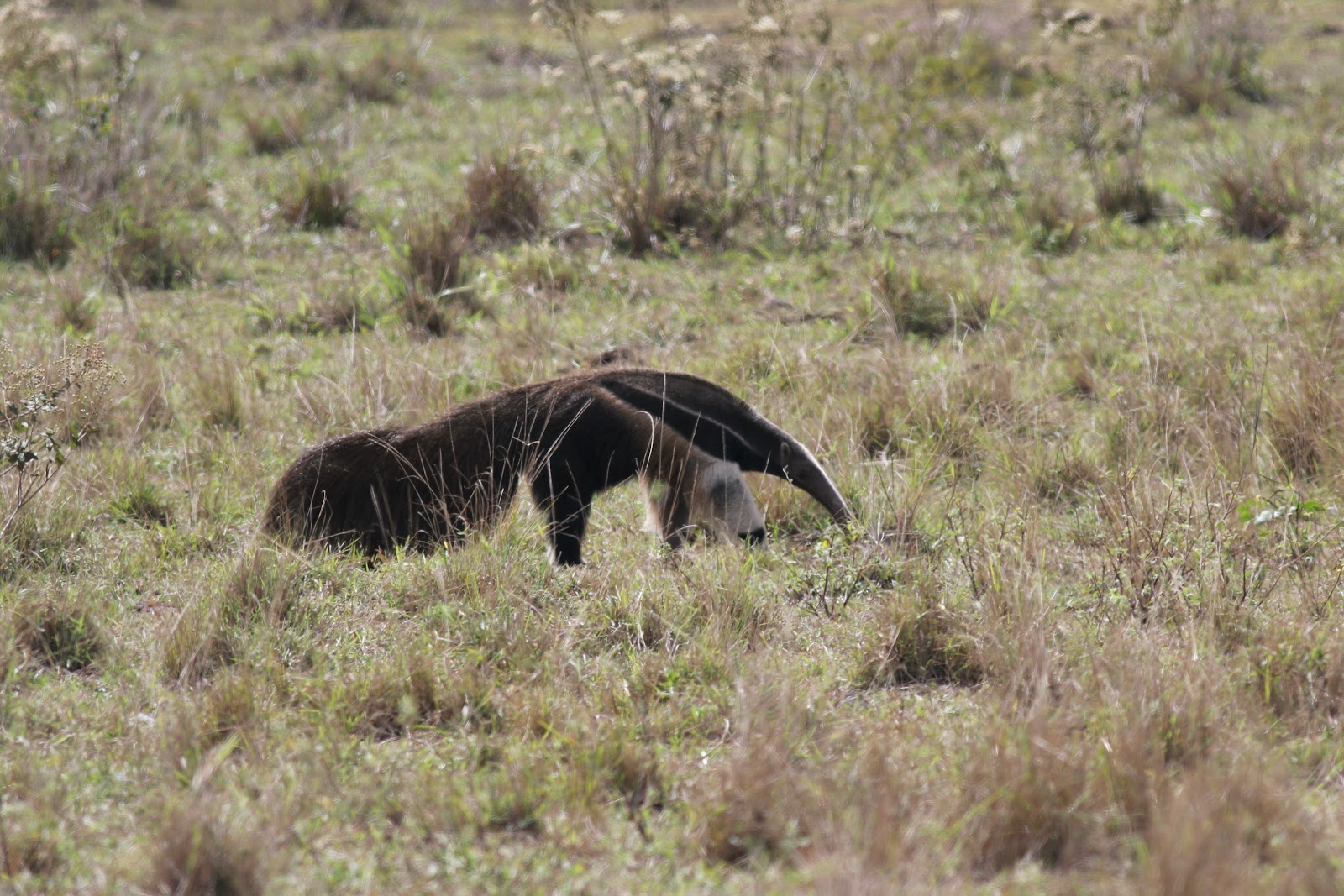The temperatures were very pleasant. When I left home earlier that week, I checked the forecast and 100 degree days were on tap so the change in weather pattern was refreshing. The landscape was dry savannah with thorny scrub and some large trees along the road and some water holes interspersed. It was a huge relief to get out of the van for the first time and set my eyes on the southern Pantanal environment that would be our base for the next few days... Prognosis was good. Our guide Alyson seemed to know when to stop the van for some good birds. He lives in Campo Grande and has been a bird guide for close to 20 years specializing in the Pantanal and the Amazon Basin.
White-rumped Monjita - there were 3 species of Monjita for us to try for but in the end we only bagged 2 of them and both in the first 30 minutes. The one thing I should have been more careful of in my prep for the trip was to learn which would be the species I could only get in the locations we were going. It seems the vast majority of the birds we were targeting can also be found in similar habitats in Bolivia, Argentina, Paraguay and other areas in Brazil. In fact, it seems the Pantanal is mainly famous because of the shear volume of birds and also some of the unique mammal species, not necessarily because the species found there are endemic to the region. In the future I will study more and make sure the guide knows what some of the wanted species are.
The White-rumped Monjita is kind of an in-between version of the White Monjita and the Gray Monjita which are aptly named.
Grassland Sparrow - this Ammodramus sparrow is fairly widespread in South America and typical of its genus is somewhat secretive but we did manage to get unobstructed views a couple of times on the trip.
Saffron Finch - this was a species I picked up previously in Colombia. They have a somewhat puzzling distribution in South America with a huge hole between Colombia and Brazil encompassing all of the Amazon basin.
Narrow-billed Woodcreeper - this species was new for me but I soon became very familiar with them as the most common of the Woodcreepers we would see in Brazil.
For now I will keep it as Short-crested because the guide seemed confident, but if anyone has experience with this complex let me know your thoughts. We were able to eliminate other Myiarchus Flycatchers like Brown-crested based on the cold coloring in the tail and wings.
Gilded Hummingbird - we quickly found out that this was by far the most common Hummingbird species. The red bill and golden tail made it fairly easy to ID.
Red-crested Finch has a somewhat strange distribution in South America in that it is widespread but each population is quite segregated.
Rufescent Tiger-heron is yet another bird which made a big splash in Colombia but ended up being ho-hum in Brazil. Probably it just has to do with appropriate habitat driving up the numbers. In the north Pantanal they were absolutely everywhere.
The Ipe trees were in bloom all across Brazil and were one of the most beautiful things I saw while there. I will see if I can dig up some photos of full trees as it seems all I am finding now are just small snapshots focused on the birds sitting in them. Here is a quick blurb from a Google search on Ipe: "Ipe (spelled ipe and pronounced “ee-pay”), also called Brazilian walnut, is a beautiful exotic wood from South America. Ipe wood structures are hard, strong, and naturally resistant to rot, abrasion, weather, and insects. It is almost twice as dense as most woods and up to five times harder."
Here is the Nanday Parakeet that called Morehead City home. I think it disappeared a couple years ago after quite a long run in which it apparently shared its home with Starlings. John Fussell joked that you could tell how cold it was by how many Starlings the Nanday would allow in the nest cavity. If it was really cold, it would be a 4 Starling night.
Blue-gray Saltators were very common and they are widespread in South America including many different habitats.
On the other hand, this White-naped Xenopsaris was the only one we saw all trip! This was an immature bird. The adults are black and white.
The female was more obliging.
Picui Ground Doves were fairly common albeit difficult to photograph.
I am splitting this day into installments because it was so overwhelming how many new birds I was getting and consequently I have a ton of material. The afternoon session is coming next.





































No comments:
Post a Comment